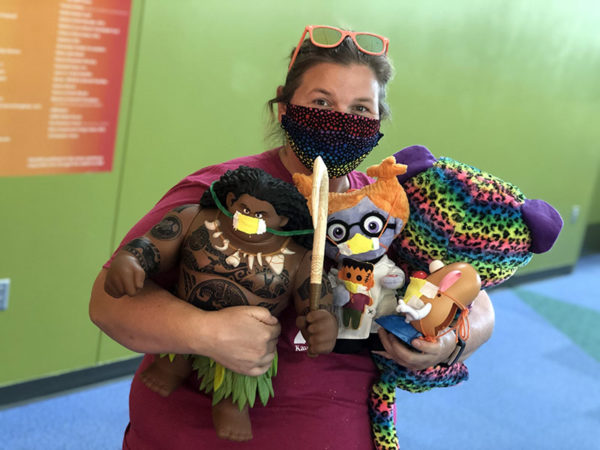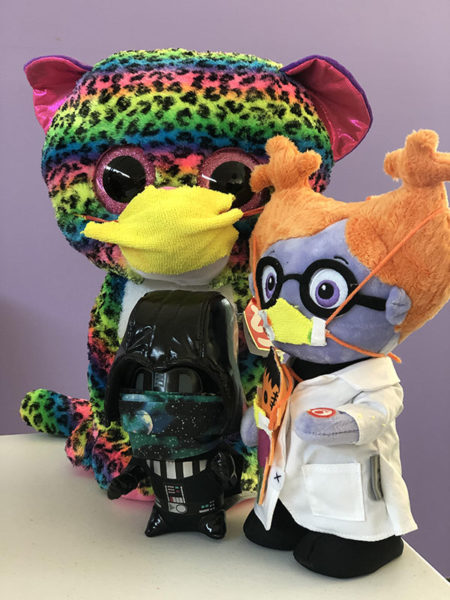
What you need:
- Cloth or tissue
- Pipe cleaners, yarn or string
- A few stuffed or plastic friends!

Directions:
- Use materials you have around the house to engineer a face covering for your stuffed friends!
- To make masks just like the grown-ups, you should know the Centers for Disease Control recommends that a face covering:
- Fits snugly but comfortably against the side of the face
- Completely covers the nose and mouth (this might be hard for dinosaurs!)
- Is secured with ties or ear loops
- Includes multiple layers of fabric
- Allows for breathing without restriction
Ways to Expand the Activity:
- Teach your stuffed friends about other ways to stay healthy and safe. Show them a six foot distance to model social distancing, or teach them how to wash their hands, or paws, or claws.
- Check out the Bill Nye face mask candle experiment, and try it out at home with different kinds of materials!
- People have come up with many interesting adaptations to face masks to solve problems! Masks with clear panels help people who need to read lips, special elastic holders reduce strain on ears and creative designs help make wearing a mask fun. What ideas does your little engineer have to help keep people safe?
- Explore some of our resources for talking to kids about COVID-19.

What Kids Learn:
- As kids start to navigate mask requirements at school and in public, play is a great way to help them process their feelings. When kids play pretend, they get to be in control or their world. They create their own rules, games and stories. This kind of play is critical to helping kids work through changes in their lives.
- Basic engineering skills. Engineers solve problems with constraints. They learn to solve problems by using the engineering design process: asking questions, coming up with solutions, building, testing and improving.
- Fine motor skills. Kids practice using the small muscles in their hands later used for writing.

